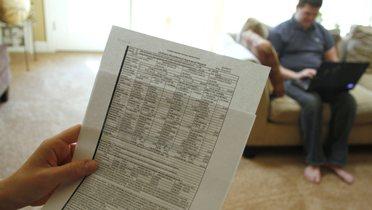Abstract
This paper highlights the extent and effects of financial illiteracy among American households, reviews previous efforts to promote financial literacy, and discusses new directions for such initiatives. None of the four traditional approaches to financial literacy – employer-based, school-based, credit counseling, or community-based – has generated strong evidence that financial literacy efforts have had positive and substantial impacts. Nevertheless, the apparent success of financial planning efforts and of simplification initiatives suggests that there are both private actions and public policy strategies that can influence saving behavior. There is a key role for the private sector in enhancing financial literacy and the market is responding rapidly to try to fill the void. At the same time, there is an at least equally important role for the public sector, via a campaign that revolves around a comprehensive website, and through better coordination of existing policies toward saving. We conclude that improving financial literacy should be a first-order concern for policy-makers, and that gains could accrue not only to the affected individuals, but also to their family members and society at large.
Introduction
In a recent consumer study, 21 percent of individuals surveyed – including 38 percent of those with income below $25,000 – reported that winning the lottery was “the most practical strategy for accumulating several hundred thousand dollars” of wealth for their own retirement. In addition, 16 percent thought that winning the lottery was the best retirement strategy for all Americans, not just themselves (Consumer Federation of America and The Financial Planning Association, 2006). This is far from the only recent example of financial dysfunction among American households. From 401(k) portfolios overstuffed with company stock to cups of coffee that cost $35 because of overdraft fees, a growing number of compelling examples suggest that many people are simply financially illiterate. For purposes of this paper, we define financial literacy as the ability to make informed judgments and effective decisions regarding the use and management of money and wealth. Financially illiterate households make poor choices that affect not only the decision-makers themselves, but also their families and the public at large, making the improvement of financial literacy a first-order concern for public policy.
Although policy makers have long been concerned about the financial status of American households, secular shifts toward lower private saving, longer retirement periods, and “do-it-yourself” defined contribution plans have fueled these concerns in recent years. Likewise, declines in housing values, financial assets, and the overall economy have heightened both the urgency and the importance of these issues.
Partially in response to these concerns, recent years have seen a growing awareness that many Americans possess little financial literacy, and an increasing belief that raising literacy rates could be the gateway to improved saving outcomes and increased financial and economic security. Efforts to improve financial literacy are now supported by a wide array of organizations, including private employers, federal, state and local government agencies, commercial banks, consumer groups, community service organizations, and religious organizations. As interest in financial literacy grows, however, it is crucial that policy makers and interested organizations understand the relative strengths and weaknesses of prior efforts to improve literacy, the new approaches to literacy that are under consideration, and how financial literacy efforts can best be implemented to exploit the advantages of pre-existing policies. (Ed.: Please download full paper for citation.)
This paper addresses these issues. We begin in section II with a brief summary of evidence on the extent and effects of financial illiteracy, and discussions of how literacy evolves over the life cycle and the potential welfare implications of illiteracy.
Section III provides much of the substance of the paper, reviewing and assessing previous research on the effects of four traditional formats for delivery of financial literacy and financial education efforts. First, employer-provided financial education expanded rapidly following the growth in 401(k) participation in the 1980s, is typically voluntary for workers, is often targeted toward retirement saving, and provided via seminars, information fairs or the distribution of written information. A second approach, state-mandated financial and consumer education for students in public high schools, expanded from the mid-1950s through the mid-1980s and tends to focus on overall financial responsibility and record-keeping. The third approach, credit and mortgage counseling, is usually provided in a one-on-one format and, naturally, focuses on helping households manage debt problems. Lastly, community-based programs frequently focus on general financial education, increasing saving or debt management, and are often administered through churches, banks or non-profits.
None of the four traditional approaches has generated unambiguous evidence that financial literacy efforts have had positive and substantial impacts. There is some evidence that workplace financial education has helped raised retirement plan participation and contributions, and that it has raised households’ overall level of saving as well – in both cases at the lower end of the saving and wealth distribution. But much of the evidence is subject to potential econometric biases, and the strongest evidence, from experimental work, suggests quite small effects. Nor are the other approaches more effective. Evidence on the impact of high-school financial education mandates or classes is ambiguous and inconsistent. While early work suggested a strong impact, recent work with more general models has rejected that finding. Evidence of impacts of credit and mortgage counseling and advising through community-based programs is suggestive, but not compelling. In general, much of the literature is marred by econometric concerns that make reliable inference difficult.
In addition to the four typical approaches to providing financial literacy described above, we also examine the impact of financial planning and of making saving choices simpler. These two issues are related to financial literacy in that they also link information and saving behavior. With some caveats, planning does appear to help people save more and simplification of saving options clearly raises participation rates and contribution rates in retirement plans.
Although prior efforts at raising financial literacy appear to have met with at best mixed success, the apparent success of planning efforts and of simplification initiatives suggests that there are both private actions and public policy strategies that can influence saving behavior. Section IV of the paper therefore explores three aspects of how private and public efforts to bolster financial literacy could evolve in the future in order to have the most impact.
First, we discuss an explosion of new private sector efforts to provide financial education and raise financial literacy, which typically focus on online access and often emphasize behavioral concepts. These activities can serve to bolster interest and knowledge of financial literacy, but may run into limits based on issues related to the independence and credibility of the informative provided. The main policy goal here is to let the private sector’s creativity bloom and to ensure that any potential conflicts of interest are reported clearly.
Second, we describe key elements of previous public information campaigns – such as the effort to reduce smoking – and how they could be transplanted into a national campaign to raise financial literacy. There are some concerns about how a campaign for financial literacy would work – for example, it may be more difficult to communicate basic financial concepts than to convey a message like “stop smoking” or “wear seat belts.” Nevertheless, an overarching public information campaign could play a key role in promoting financial literacy, by providing a credible, digestible, timely, comprehensive, and continual information on the key issues. The literature on campaigns offers many important lessons that could be applied to a financial literacy campaign.
Third, we discuss how interactions between financial literacy initiatives and other public policies could be exploited to leverage the impact of both new and existing policies. Policy makers have encouraged saving through several different approaches, such as mandates (social security), incentives (401(k) plans), choice architecture (automatic enrollment), and information (social security’s individualized annual statements to participants). A promising direction for financial literacy policy is to focus on the extent to which such policies are complements or substitutes. We argue that combinations of policies – for example, to help low-income households save – are coherent intellectually and would leverage the impact of each individual intervention.
Section V offers concluding remarks.




